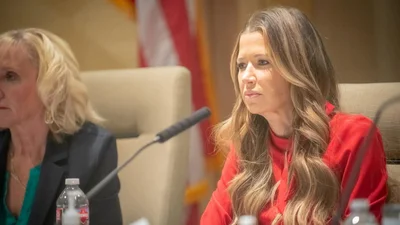John Crenshaw President | New Mexico Wildlife Federation
New Mexico’s Department of Game and Fish is preparing to implement a new State Wildlife Action Plan (SWAP), which will provide guidance for conserving hundreds of wildlife species and their habitats. The plan, compiled by agency biologists, outlines steps needed to prevent species from becoming endangered and serves as a resource for the public to learn about at-risk animals in their regions.
Virginia “Ginny” Seamster, Ph.D., assistant chief for technical guidance in the department’s Wildlife Management Division, will present details about the SWAP and answer questions during the New Mexico Wildlife Federation’s free “Wildlife Wednesday” event on June 11 at Marble Brewery’s Northeast Heights Taproom in Albuquerque.
Seamster has worked with the agency for a decade and oversees the Biota Information System of New Mexico (BISON-M), which tracks data on thousands of species’ biology and legal status within the state.
The SWAP addresses climate change as a significant threat to wildlife. According to Seamster, “New Mexico is basically the driest state in the United States and I feel like climate change in conjunction with other threats is one of the biggest drivers of population declines. Obviously, habitat loss is a big threat, too, but when you combine something like habitat loss with hotter, drier conditions, the environment is very stressful for a lot of species.”
She added that both understanding and addressing climate change are included in the plan: “So we have some things that are focused on understanding the threat of climate change, and other things that are focused on actually doing something about it. And as much as possible, we did try to incorporate climate-smart concepts into actions that address other threats.”
Federal requirements mandate that states update their wildlife action plans every ten years to qualify for federal funding. New Mexico expects approximately $1 million annually from these funds.
The draft SWAP was released last month for public comment until June 9. The State Game Commission will consider approval at its June 13 meeting in Red River. The final version must be submitted to the U.S. Fish and Wildlife Service by fall.
The plan identifies 505 species needing conservation attention—including burrowing owls, pinyon jays, river otters, Chiracahua leopard frogs, Gila trout—and highlights gaps in scientific knowledge about 303 of them.
Earlier this year, Senate Bill 5 expanded both funding and authority for New Mexico’s wildlife agency. The bill changes its name next year from Department of Game and Fish to Department of Wildlife and broadens commission oversight to include all invertebrates such as insects—many now listed among those most needing conservation work.
Jesse Deubel, executive director of New Mexico Wildlife Federation (NMWF), supported SB5 during legislative hearings. In addition to expanding responsibilities over more species categories—including insects—the legislation raises hunting and fishing license fees for increased revenue projected at $10 million per year. Other sources such as New Mexico’s Land of Enchantment Legacy Fund contribute around $3 million annually toward conservation efforts; this year’s Legislature also provided an extra $10.5 million through general appropriations.
Seamster noted that additional resources will help fund research and conservation activities: “Being on the Species of Greatest Conservation Need list means that you can use state wildlife grant monies to do work on that species,” she said. “So, right off the bat... there is potential for some resources to be available at the federal level to do work on that species.”
While inclusion on this list does not automatically confer protected status under law or regulation—nor does adoption of SWAP itself alter protections—the expansion next year allows broader protection options: “But what we can protect has dramatically extended,” Seamster said.
The SWAP enables people across six ecoregions within New Mexico to identify local at-risk wildlife populations using publicly accessible information tailored by location or interest area.
Seamster emphasized community involvement: “You can figure out where you live... see these are some of the species that might be in trouble near where I am.” She explained further: “The goal... is to provide information on species that we have some level of concern for and lay out actions that could be taken... And we really do want this document to be applicable... both conservation practitioners and members of the public.”
She continued: “Obviously there’s plenty...the average person won’t be able to undertake,” but many recommended actions target private landowners or groups who may wish—or have capacity—to help locally: “And we do want these [actions] ...people can say ‘hey I can do that.’”
“The actions are broad enough that we want them statewide,” Seamster concluded. “And we want them...tailored ...to what’s appropriate in your area ...and appropriate ...to resources ...and jurisdictions...”









